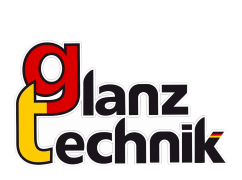Restoration of technological equipment using laser technologies.
The choice of filler wire depends on the material of the tooling. It allows you to achieve different surface hardnesses.
up to 65 HRC
up to 65 HRC
GLANZTECHNIK
Repair of technological equipment using laser technologies

Laser cladding for tool restoration
Want to extend the service life of your metal tools? Laser cladding is the perfect solution!
What is it?
Laser cladding restores the geometry of metal parts by creating a layer that is as strong and dense as the base material, and sometimes even exceeds it. This ensures the durability of the restored parts.
How does it work?
The process is simple: the laser heats and melts the metal, joining the parts and creating a strong seam. This is a type of fusion welding that guarantees high-quality repairs.
Why choose us?
Modern equipment: We have seven powerful laser machines.
Comprehensive services: We work both at our production sites and at customer sites.
Experience and professionalism: Our specialists know all the intricacies of laser cladding and guarantee excellent results.
Want to restore your equipment quickly and efficiently? Contact us!
Want to extend the service life of your metal tools? Laser cladding is the perfect solution!
What is it?
Laser cladding restores the geometry of metal parts by creating a layer that is as strong and dense as the base material, and sometimes even exceeds it. This ensures the durability of the restored parts.
How does it work?
The process is simple: the laser heats and melts the metal, joining the parts and creating a strong seam. This is a type of fusion welding that guarantees high-quality repairs.
Why choose us?
Modern equipment: We have seven powerful laser machines.
Comprehensive services: We work both at our production sites and at customer sites.
Experience and professionalism: Our specialists know all the intricacies of laser cladding and guarantee excellent results.
Want to restore your equipment quickly and efficiently? Contact us!
GLANZTECHNIK
Technological flexibility and convenience

Laser cladding: fast and high-quality restoration of equipment
Laser cladding is a modern method of restoring metal products, which is highly flexible and convenient to use. It can be used to quickly and efficiently repair even complex defects, such as worn edges, chips, and dents in casting molds.
Why choose laser cladding?
Simplicity and convenience:
Laser welding can be performed in any spatial position.
The product can be moved under the laser beam or the beam can be moved over and around the product.
No vacuum chambers or controlled atmosphere chambers are required, allowing you to work with parts of any size.
Efficiency:
High productivity — restoration takes a minimum of time.
Excellent material quality — the welded layer has improved properties compared to the base material.
Increased service life — restored molds last longer than new products.
Versatility:
What defects can be eliminated?
Benefits for you:
Laser cladding is a modern method of restoring metal products, which is highly flexible and convenient to use. It can be used to quickly and efficiently repair even complex defects, such as worn edges, chips, and dents in casting molds.
Why choose laser cladding?
Simplicity and convenience:
Laser welding can be performed in any spatial position.
The product can be moved under the laser beam or the beam can be moved over and around the product.
No vacuum chambers or controlled atmosphere chambers are required, allowing you to work with parts of any size.
Efficiency:
High productivity — restoration takes a minimum of time.
Excellent material quality — the welded layer has improved properties compared to the base material.
Increased service life — restored molds last longer than new products.
Versatility:
- Suitable for processing metals that are difficult to weld using traditional methods.
- Additive technology adds material to the coating or volume of the product, ensuring accurate restoration of geometry.
What defects can be eliminated?
- Worn edges of semi-molds
- Chips and dents
- Surface damage and mold defects
- Laser cladding not only restores the mold, but also improves its characteristics, which is especially important for casting molds. Thanks to the high precision and quality of the material, the restored molds will serve as long as new ones, and sometimes even longer.
Benefits for you:
- Quick restoration without production downtime.
- High quality of the welded layer.
- Savings on replacing worn equipment.
- Increased mold service life and reduced maintenance costs.
The main advantages of laser cladding
- LOCATION OF MATERIAL PROCESSINGLaser cladding offers high precision, minimal deformation, a small heat-affected zone, and versatility, making it the ideal choice for complex parts and a variety of materials. Laser cladding is also a reliable solution for extending the service life of equipment.
- HIGH PERFORMANCE
High precision in performing work is a key factor for success in many industries. High precision allows us to weld products and structures that meet the most stringent standards and requirements, ensuring their durability, service life, and operational efficiency.
- Ensuring minimum weld thickness with maximum strengthEnsuring the minimum thickness of the weld seam while maintaining maximum strength is an important task in surfacing. This is achieved by selecting the right additives and appropriate diameter, and adjusting the laser device for optimal current and surfacing speed. It is also important to consider the preparation of the surfaces to be welded, their cleaning and alignment, to ensure the best quality of the welded surface.
- Minimizing the thermal impact zone during repairsLaser cladding truly minimizes the thermal impact on the repaired surface, which helps to avoid metal creep. This is achieved through the use of laser radiation, which provides precise and controlled exposure to the material, allowing cladding beads to be formed with minimal penetration of the base material.
The laser cladding process consists of several stages:
Surface preparation
Surface treatment to ensure adhesion of materials.
Submission of material
Wire blanks are fed into the focus of the laser beam, where they melt under the influence of high temperatures and form a small pool of molten metal on the substrate.
Surfacing
The laser and material feed system operate synchronously, forming a continuous layer of deposited material.
Subsequent processing
The surface obtained by the surfacing method can be further processed and polished to achieve the desired appearance and characteristics.
Our services
-
Polishing of mold surfaces to a mirror finish
Our specialists will manually restore working surfaces and bring them to perfect conditionGo to the page -
Laser cladding
We offer laser cladding services. This is an effective way to restore the surface of a product by eliminating damage and wear. When performing laser cladding, additives are selected in the same way as for the equipment being repaired, which allows the required metal hardness to be achievedGo to the page
(up to 65 HRC). -
Chemical etching
The range of services also includes the application and local restoration of textured surfaces on tooling, which helps to restore the original pattern on the part that forms the finished product. This gives the part a unique design and texture, as well as improving adhesion to plastic elements, making the product more durable and aesthetically pleasing.Go to the page -
Manufacture of molds
We provide mold design services. We specialize in high quality at affordable prices and strict adherence to deadlines.Go to the page
We use a YCM MV106A vertical machining center with numerical control.
Its characteristics:
three axes;
working area: X — 1020 mm, Y — 600 mm, Z — 600 mm. -
Electrical discharge machining of parts
We provide electrical discharge machining services.Go to the page
The working area measures 600 mm in width and 400 mm in height, allowing us to process medium-sized and complex parts.
The maximum weight of the electrode is 50 kg, and the workpiece is 400 kg, ensuring sufficient load capacity. -
Abrasive blasting
We offer abrasive blasting services, which effectively remove various contaminants from surfaces, including traces of corrosion. As a result, the surface becomes more resistant to external factors, which helps to increase its service life.
Details
- Please contact us at production@glanztechnic.ru, and we will respond to your inquiry promptly.
How to find us
- Legal address:
Taxpayer Identification Number
- 4703135778
Contact us
“We restore complex items — we guarantee quality.”
Website created by: Belousov
